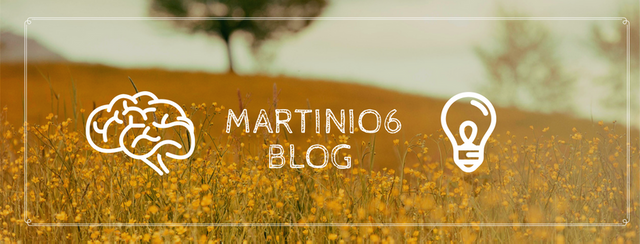Attention is exercised as a muscle
That's what Daniel Golman says in his book "Focus" (East-West) and explains - he weakens when inadequate use, and strengthens with appropriate training. But how do we take control of our attention in a world where we are attacked daily by unnecessary information?
The answers are in the book, which is an extremely useful guide and a unique study that combines convincing insights, diverse examples and up-to-date scientific innovations. According to the author, the key to our successful personal and professional life is the ability to focus our attention. The writer offers accessible explanations on how to improve this focus.
Daniel Gallmann distinguishes three types of concentration: internal, other and external. The inner sets us to our own intuitions, guiding values and better solutions. The other smoothes the relationship with the people in our lives. The external allows us to orient ourselves in the larger world. By developing the three types of focus, each of us can find balance and be productive and happy.
Based on various research and practical results, Goldman reveals that the mechanism that primarily helps our mature personality is just the focus. The conscious, unified and trained attention guarantees success in every field.
Daniel Golman is a former author of the New York Times, a scholar and journalist, author of thirteen books, and is often invited to a lecture at various colleges. He co-founded the Association for Academic, Social and Emotional Education at Yale University. She lives in Massachusetts.
The translation from English is done by Elena Filipova, translated books such as "After Babylon", "How to create a mind" and "The best angels of our nature", the author of the cover is Andrei Kozarev.
Excerpt from Part Two of "Focus" - "Self-awareness"
The brain map of the body
Once he discovered liver cancer that would take his life a few years later, Steve Jobs delivered a heartfelt speech to Stanford University graduates. The Jobs Council: "Do not let the voice of strange opinions drown your inner voice. And most importantly, have the courage to follow your heart and intuition. They already somehow know what you really want to become. "
But how do you listen to your "inner voice" in what your heart and intuition somehow already know? You have to rely on the signals from your body.
You may have seen the strange picture of a body depicted from the point of view of the somatosensory cortex - the image follows the sensations recorded by the different areas of our skin and accordingly the creature of the picture has a tiny head but huge lips and tongue, small arms but huge fingers - all of which reflects the relative sensitivity of nerves in different parts of the body.
A similar observation of our internal organs is done by the insula hidden behind the frontal parts of the brain. The insula maps the insides of our body through neuronal chains associated with the intestine, heart, liver, lungs, genitals - each organ has its specific place. This allows the insulator to act as a control center for the functioning of organs, sending signals to the heart when it slows down its rhythm to the lungs - when to take deeper breath.
Inward attention to any part of the body enhances insulin sensitivity to the specific area we are examining. Listen to your heart rhythm and the insulin will activate more neurons than this circuit. How well people feel their heart rate actually has become a standard way to measure their self-awareness. The better they are, the greater their insult.
Insulation adjusts us not only to our bodies; it depends on our own feeling of how we feel. People who are unaware of their emotions (and also, as we will see, how others feel) have a lower insulin than the strong activity found in people who are strong at home emotional life. The ultimate case of dissonance is people with anxiety who simply do not know what they feel and can not imagine what someone else might feel.
Our "inner feelings" are inspirational messages and other bottom-up systems that simplify our life decisions, directing our attention to more practical options. The better we are in the reading of these messages, the better our intuition is.
Take that intrusive inner feeling that sometimes surrounds you when you suspect you forget something important, going a long way. A marathon runner told me about one case when she was on a race and was about 650 km away. She felt that obsessive feeling - but she ignored it. While driving on the highway, however, it did not leave her alone. At one point she realized what she was doing - she had forgotten her sneakers!
She turned and went through a mall that was already closed, and that saved the situation. But her new sneakers were not the brand she usually wore. As you said, "I have never been more sour!"
A somatic marker is the term of neuroscience Antonio Damazio for the sensations in our body that tell us when a choice seems wrong and when it is correct. These bottom-up systems telegrap their conclusions through the sensations of our insides, often long before the top-down systems come to a more deliberate conclusion.
The ventromedial prefrontal zone, a key part of this system, guides our decisions when faced with the most sophisticated life choices, such as who to marry or marry, whether to buy a house. Such choices can not be made through cold rational analysis. Better would be to razigraem options how we would feel if we choose A rather than B . This brain area acts as an inner handle.
There are two main streams of self-consciousness: I that builds narratives for our past and future, and "I", which brings us back to the immediate present. As we have seen, it links what we experience in time. The sharp contrast "I" exists only in the raw experiences of the immediate moment.
Our most intimate sense of self - "I" reflects the fragmented summation of our sensory impressions and especially of our physical states. It is built up by our brain system to map the body through the insula8.
These signals from within are our in-house leaders who help us on many levels - from living in accordance with our leading values to the unforgettable sport shoes.
As a Sirk du Soleil singer told me, in their workouts, circus acrobats strive for the "perfect practice," in which the laws of physical movement and the rules of biomechanics combine into angles, speeds and moments, so that you become " - most of the time - you're never perfect all the time. "
And how do the acrobats understand that they are getting closer to perfection? "It feels good. You feel it in your joints before you understand it with your head. "
Source: www.sciencealert.com , www.pexels.com


The force is with you! You got a 33.33% upvote from @steemyoda courtesy of @martinio6!
You got a 1.05% upvote from @postpromoter courtesy of @martinio6!
Want to promote your posts too? Check out the Steem Bot Tracker website for more info. If you would like to support the development of @postpromoter and the bot tracker please vote for @yabapmatt for witness!